Tools of the Trade: Building Your Hand Tool Collection
There are so many hand tools available. Especially when you’re starting out, it can be hard to decide which tools are right for you.
Here at the Contractor Cave, tools are our specialty! In this blog, we’ll examine hand tool categories and the eleven essential tools for every tool collection.
Let’s dive in!
Initial Considerations
What exactly are hand tools
Hand tools are operated manually without electricity or external power.
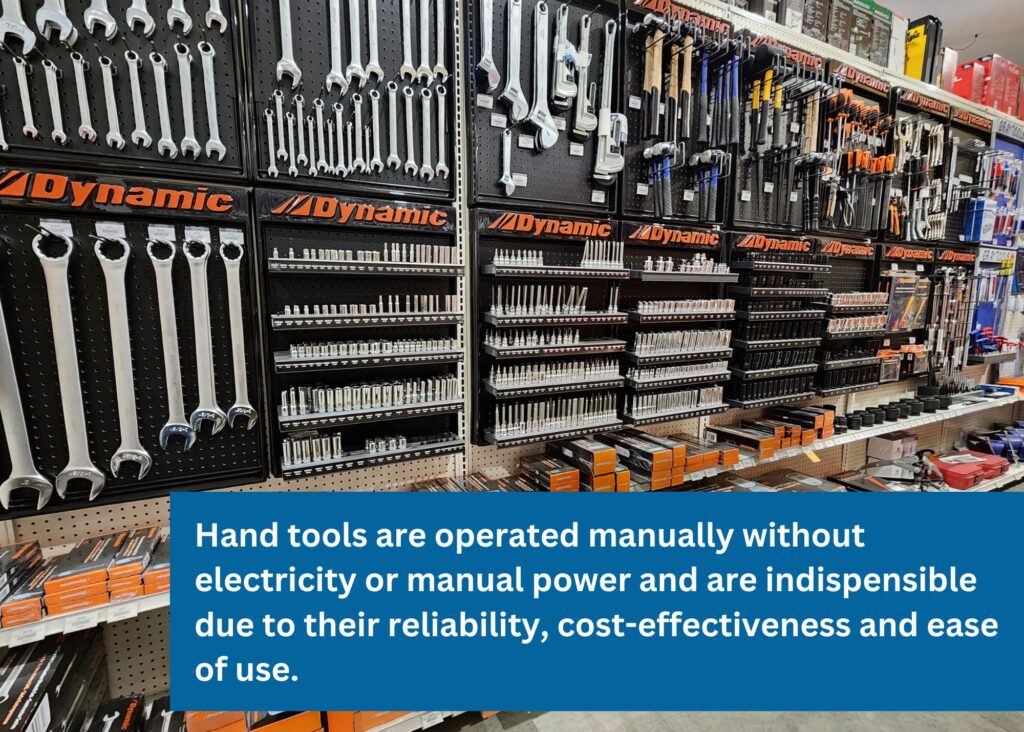
They are essential for construction, woodworking, metalworking, and automotive repair. Made from steel, aluminum, plastic, and wood, they remain crucial for DIY projects and repairs. Despite the rise of air-powered and electric tools, hand tools are still valued for their reliability, cost-effectiveness, and ease of use, making them indispensable across skill levels.
Before you start collecting your hand tools, start by asking yourself a few questions.
First, what do you hope to accomplish with these tools? This will be the guiding question when creating any hand tool collection. Are you building a woodworking shop? Do you want to start working on that classic car you just purchased? Perhaps you simply want some hand tools for miscellaneous jobs around the house.
Second, how serious are you about your craft? Another way to ask this question is, how often do you expect to use these tools? This can help you decide what quality of tools to purchase. Buying the cheapest tools on the market is usually a bad idea. But if you only expect to use the tools a couple of times a year, you probably don’t need the highest quality on the market. If you’re a contractor or a serious crafter, choose quality.
Now that you’re thinking about the kind of collection you’ll need, let’s look at the different categories of hand tools.
Categories of Hand Tools
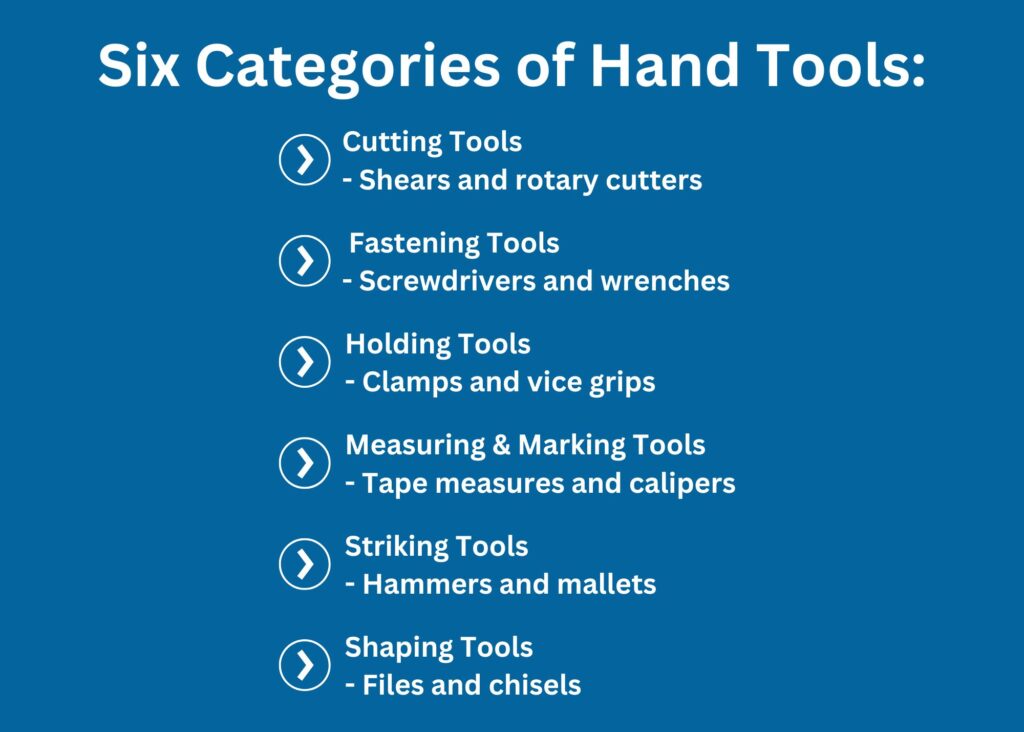
We’ve divided hand tools into six different categories. Some tools overlap between categories depending on their use.
And remember – a good tool collection usually contains tools from each category.
1. Cutting Tools
Definition: Cutting tools are used to cut, shape, and remove materials. They are used in most industries and DIY projects. They are generally made of steel or a similar durable metal and come in many sizes and shapes. There is a cutting tool for every job, from rotary cutters for fabrics to shears for heavy, thicker materials. Be sure to wear appropriate protective gear when using a cutting tool!
Examples:
- MILWAUKEE Jobsite Straight Scissors
- MILWAUKEE Folding Jab Saw
- MILWAUKEE FASTBACK™ 6IN1 Folding Utility Knife
- OLFA Heavy-Duty Fiberglass-Reinforced Utility Knives
2. Fastening Tools
Definition: Using mechanical force, fastening hand tools are designed to secure, join, or hold materials together. These tools are used to drive nails, tighten screws, bolts, or nuts, and keep parts in place during construction, assembly, or repair work.
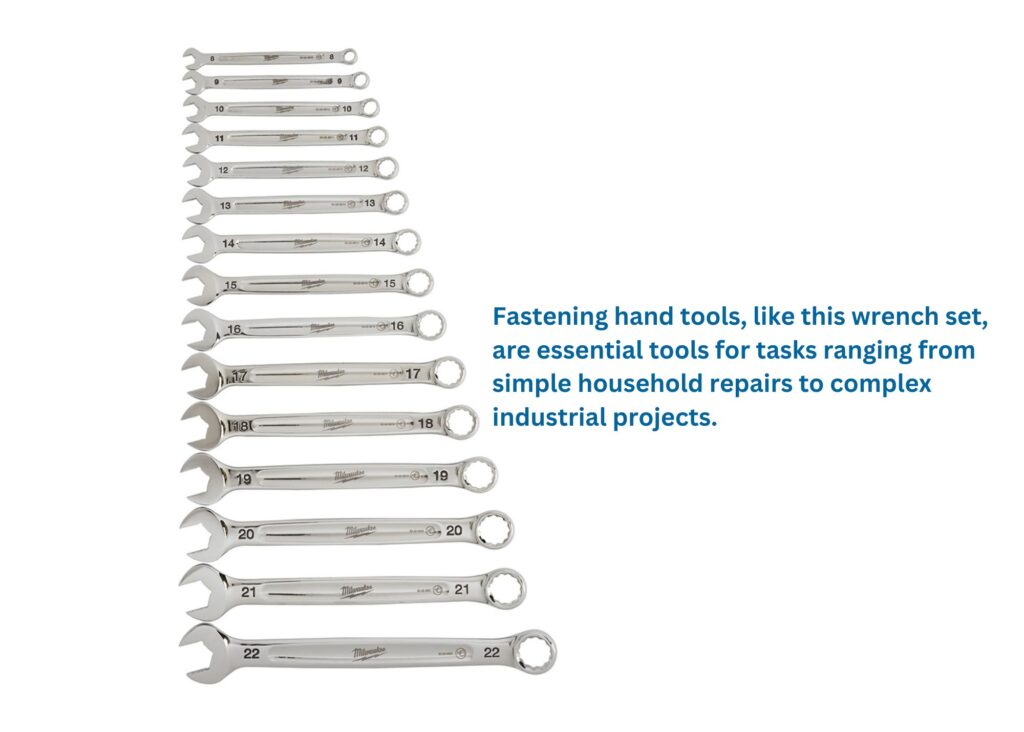
Fastening hand tools are essential for tasks ranging from simple household repairs to complex industrial projects.
Examples:
- WERA Screwdriver Set 6 Pc + Rac,
- SUNEX 10 Piece SAE Jumbo Combination Wrench Set
- KNIPEX 8″ Twin Grip Slip Joint Pliers
3. Holding Tools
Definition: Holding hand tools, such as clamps and vice grips, are designed to grip, stabilize, or support objects during various tasks. These tools help secure materials in place, allowing for more precise cutting, fastening, or shaping. Holding tools are essential in tasks that require a steady hand, such as assembling parts, working on delicate projects, or applying force without slipping.
Examples:
- DYNAMIC 10″ Vise Grip-Curved Jaw w/Wire Cutter
- DEWALT ToughSeries 12″ Hybrid Clamp
- IRWIN 11″ C-Clamp w/Swivel Pads 11SP
- BESSEY Clamp ClassiX Steel 12″ x 5-1/2″
4. Measuring and Marking Tools
Definition: Measuring and marking hand tools are used to gauge dimensions and accurately create reference points on materials. These tools ensure accuracy in cutting, aligning, and assembling components. Measuring tools provide exact measurements, while marking tools allow for clear, visible guidelines on materials, ensuring that projects are completed precisely.
Examples:
- MILWAUKEE 25ft Compact Wide Blade Magnetic Tape Measure w/ Rechargeable Light
- EMPIRE® 5″ Vernier Caliper
- QUICK SQUARE® Pocket Square – STANLEY® 7
- PICA Dry Auto Pencil w/ 8pk Lead Refills
5. Striking Tools
Definition: Striking tools are hand tools designed to deliver forceful blows to an object, often to drive nails, shape materials, or break apart objects.
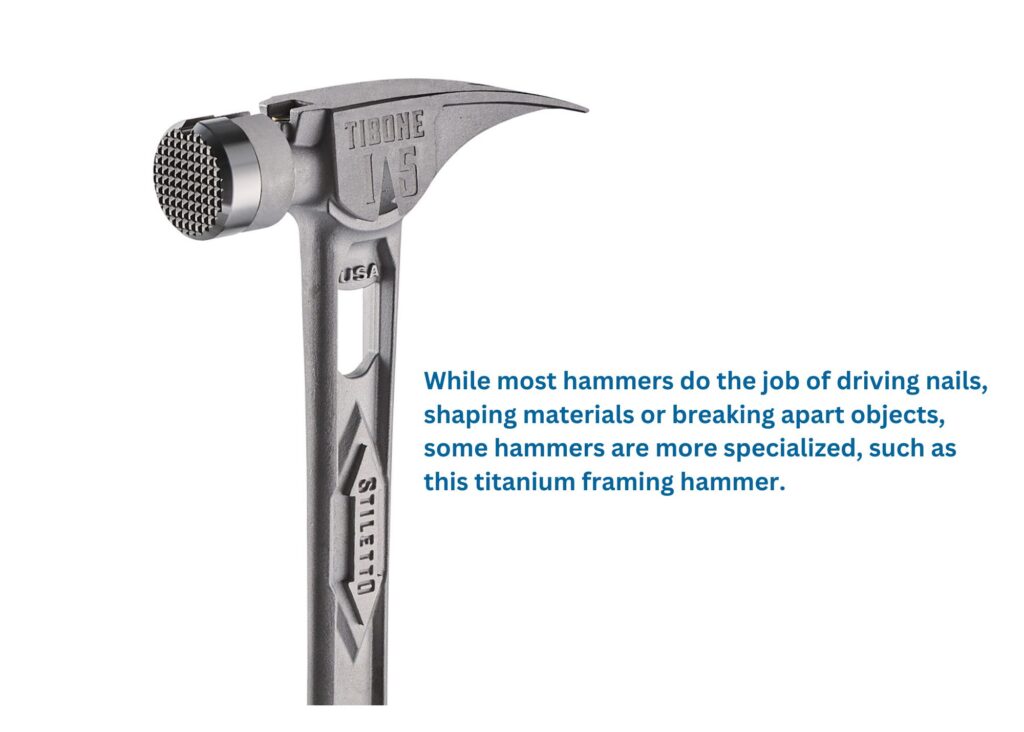
These tools are essential in construction, woodworking, metalworking, and demolition. Striking tools vary in weight and design to suit specific tasks, providing the necessary impact to perform jobs that require significant force.
Examples:
- DEWALT TOUGHSERIES™ 12 oz. Mig Weld Hammer
- Stiletto 15 oz Framing Hammer
- DYNAMIC Hammer 32oz
- DEWALT 4 pc Wood Chisel Set
6. Shaping Tools
Definition: Shaping tools are hand tools used to alter materials’ form, surface, or contour by removing or deforming material. Examples include files, rasps, planes, and chisels. These tools are essential in woodworking, metalworking, and crafting, where precision and control are needed to achieve the desired shape or finish. Shaping tools allow for detailed work, enabling users to smooth edges, carve intricate designs, or create specific profiles in various materials.
Examples:
11 Must-Have Basic Hand Tools
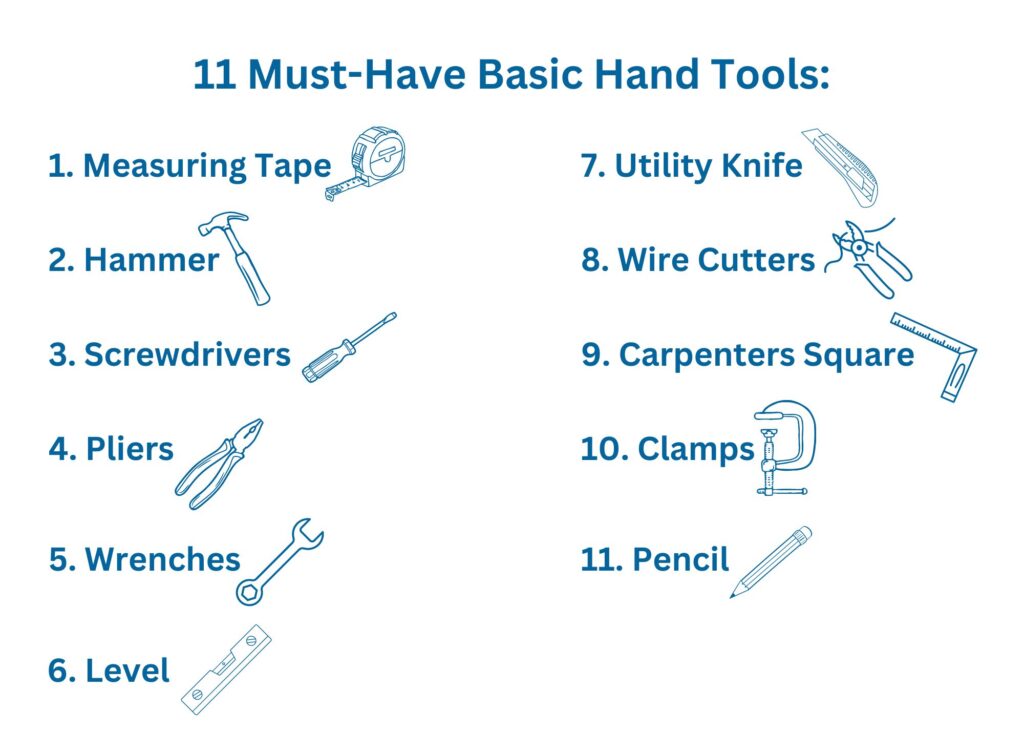
Now that we’ve reviewed the different categories of hand tools, here is a list of 11 essentials for your hand tool collection.
1. Measuring Tape
A tape measure is essential when replacing an appliance or upgrading a room. Start with an easy-locking 3/4-inch-wide model; narrower tapes may slip, and wider ones can be excessive.
2. Hammer
Choose a hammer with a comfortable grip, preferably with vibration-dampening. Opt for a straight or “rip” claw for demolition tasks, and ensure the head is smooth to prevent surface damage and nail slippage. While a claw hammer is a toolbox staple, a sledgehammer is also valuable for heavier tasks like breaking concrete or tackling wall and blacksmith projects.
3. Screwdrivers
A good-quality screwdriver set is essential, with various flat head and Phillips head sizes, especially 1/8-inch and 3/16-inch flat heads and #0 and #2 Phillips heads. It’s also a good idea to have square (Robertson) screwdrivers on hand for when they are needed.
4. Pliers
Pliers are crucial for gripping and manipulating small objects. They can pull, pinch, or bend metal with sufficient torque. Ensure you have a good set with long-nose, combination, and locking pliers.
5. Wrenches
You’ll need adjustable wrenches in various sizes for handling hex nuts and bolts, along with combination wrenches for tight spots. As you gain experience, consider adding a ratchet and socket set for faster bolt manipulation. Also, keep an Allen wrench or hex key set handy for assembling furniture and other home items.
6. Level
These are essential for installing cabinets or hanging picture frames. Basic analog levels with a floating bubble are both accurate and affordable.
7. Utility Knife
A high-quality utility knife is versatile and essential. It’s great for opening taped boxes, cutting carpet edges, and scraping away resin or paint.
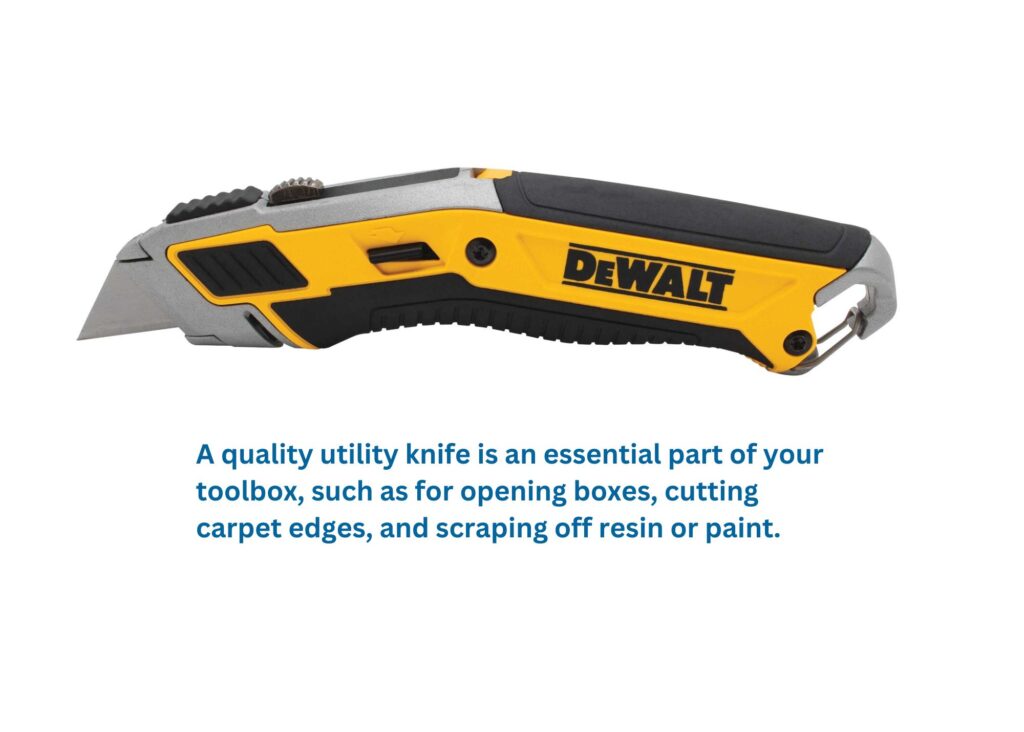
8. Wire Cutters
For crafts and electrical repairs, wire cutters are essential. They handle materials like aluminum, copper, brass, iron, and steel. Choose a pair with a cushioned grip for added comfort.
9. Carpenters Square
A carpenter’s or combination square is used in woodworking, metal, and masonry projects. It features a metal ruler and interchangeable heads to measure right angles, check depth, and verify level and plumb.
10. Clamps
Clamps and vises are used to secure work during woodworking or electrical projects. They come in various types, including screw, angle, bar, and locking clamps, and are affordable tools for the home carpenter.
11. Pencil
The final item in this collection is a carpenter’s pencil, which is cheap and helpful for marking measurements and writing quick notes.
Bonus: 4 Specialized Hand Tools
In some cases, you may want to go beyond basic hand tools like a utility knife, hammer and wire cutter.
To take your toolkit to the next level and expand the number of tasks you can tackle, here are a few more unique items that should be in the toolbox of the DIY’er, handyman, or contractor.
- Torque Wrenches (Automotive): These are used in the automotive industry for specific levels of torque to various bolts or nuts.
- Wire Strippers (Electrical): These tools are designed to strip electrical insulation from electrical wires.
- Chalk Line (Construction): A chalk line is a tool used in construction to mark straight, precise lines on surfaces, making it easier to cut or align materials accurately.
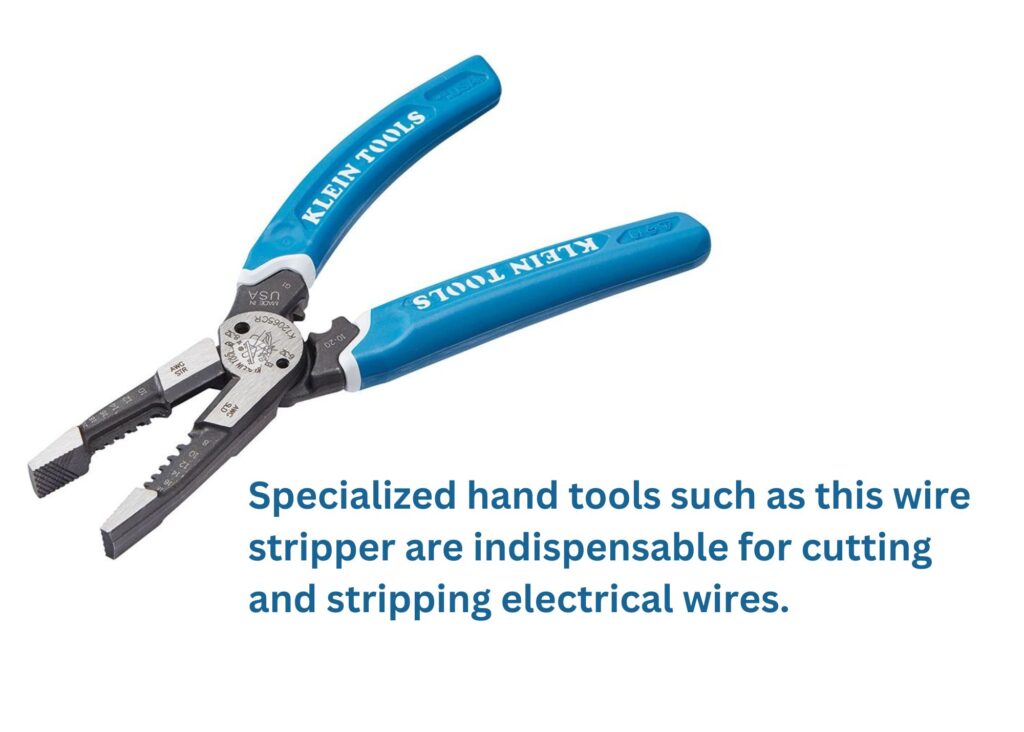
Conclusion
We hope you found this blog helpful! If you have, you may also enjoy our post on Battery Powered Tools.
If you have any questions regarding the tools we offer, feel free to reach out today! We look forward to hearing from you!




